How much RAM Do You Need For Laptop in 2024?
I’ve come across many laptop RAM guides and noticed that they were all outdated. For example, some websites claim you only need 4GB RAM for basic office work and web browsing.
Well that was probably true 6 years ago but with Windows 11 takes up AT LEAST 4GB and most software updates have increasing their RAM requirements so that’s WAY too low.
How much do you need in 2024?
The average user will need a MINIMUM of 8GB RAM for Windows & Mac (though 16GB will be fool proof for pretty much everyone).
4GB is ONLY useful if you’re running Linux, Chrome OS or Windows in S mode.
Now…if we get to SPECIFIC applications.
The amount you need may vary between 8GB-16GB and very rarely 32GB.
That much RAM is reserved for EXPERTS who work with very very complex & heavy files in CAD work, photo & video editing, etc.
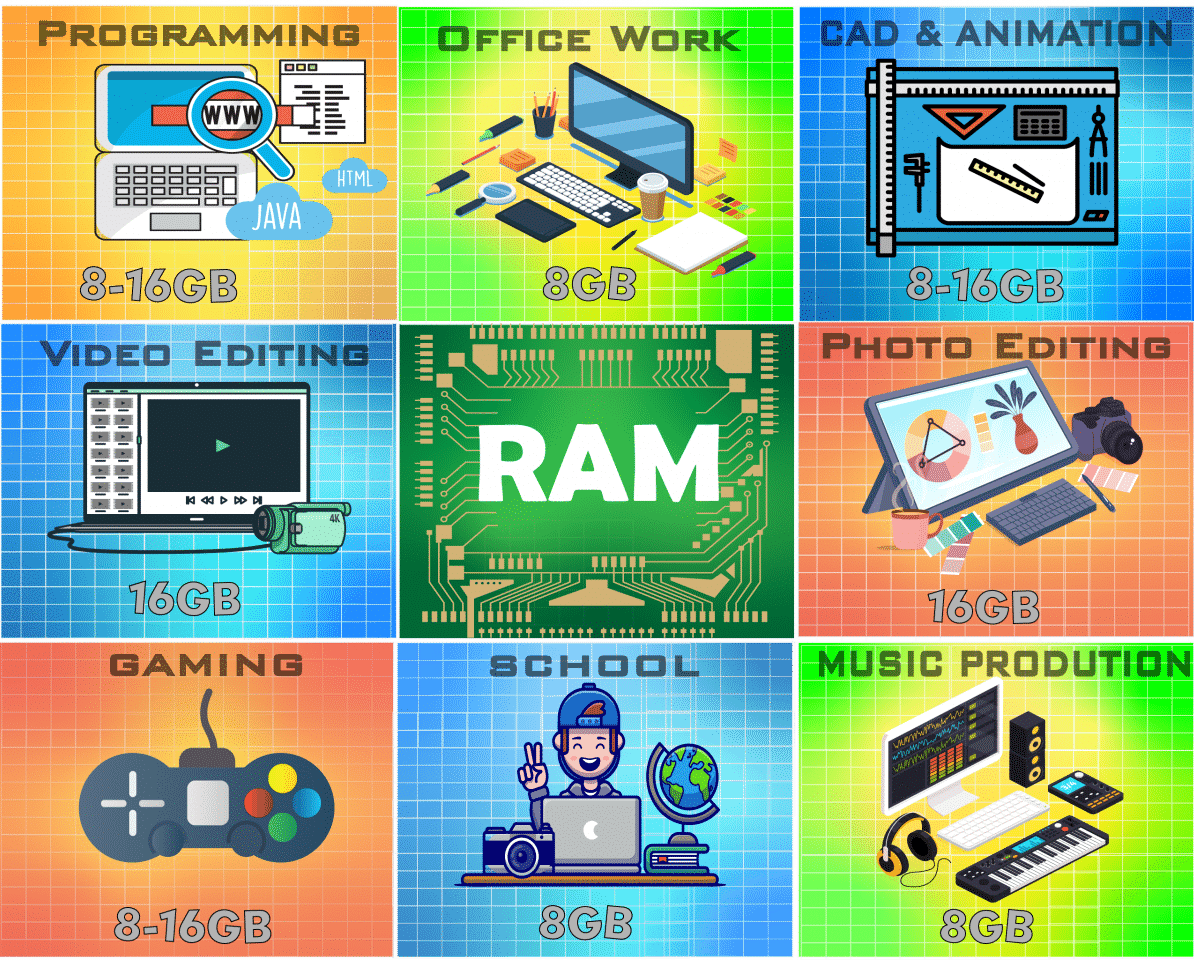
In the infographic above, I’m listing how the minimum RAM you’ll need to be productive and efficient with all types of software.
Feel Free to use the table of contents to jump to a specific task where I go over the details.
School & Office Work: 8GB RAM
Most people working at an office or using a computer for general school purposes:
- Chrome (or other Web browsing software) w/ ~20 tabs
- Youtube
- MS Office or Adobe Creative Suit or Some Photo Editing software
- Zoom
- Non-graphical software (accounting software, design software, software for calculations, etc).
Below I’m running all the applications mentioned simultaneously:
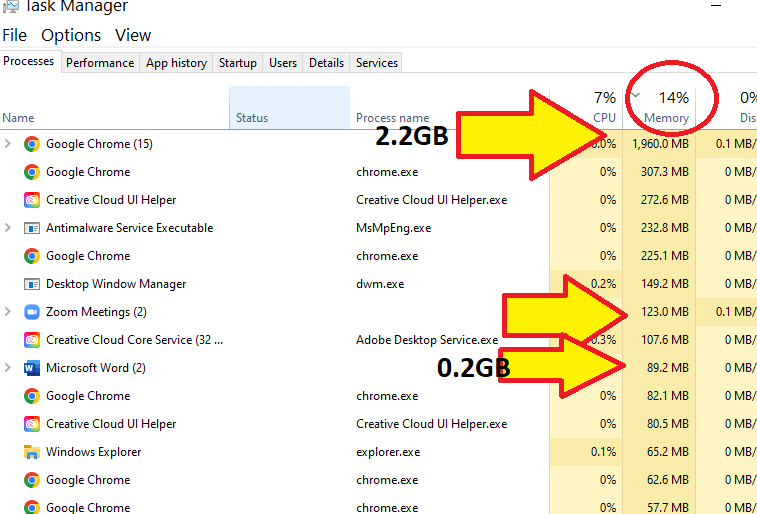
The most RAM eating application is a web browser (which has youtube open too). In this, it’s Chrome taking about 2.2GB. Firefox, Opera, Safari should take a lot less.
Office & zoom don’t take much more than 200MB (this may change depending on what you’re working. Ex: MS Excel with a huge data sheet may take up to 500MB by itself).
Most software useful for actual work or school (Check out a complete list of FREE software here), will take less than 1GB!
If we add Windows (which will take 4GB as the minimum to run optimally).
How about 16GB RAM?
Well that much will ONLY help if you run HEAVY apps which we’ll go next OR if you want to go REALLY CRAZY with web browsing tabs (+50-100 tabs open).
Gaming: 8GB-16GB RAM
Games will take anywhere from 1.5-25GB RAM depending on the resolution you play at (FHD, 4k, 8k, etc) and the graphics settings (Low,Med,High,Ultra or Epic).
If you want to know how much exactly a specific GAME will take at EACH resolution, check out my post: RAM Game List.

On average you will ONLY need 8GB (for 1080p high settings) IF :
- You have a dedicated GPU (see my post on dedicated GPUs vs integrated GPUs).
- Set settings to medium-high and 1080p resolution.
On the other hand, if you DON’T have a dedicated GPU:
- The game will run on the weaker integrated GPU by default and although you CAN make do with 8GB RAM (Low-Med Settings at 1080p) you want 16GB RAM.
- The extra 8GB RAM will BOOST the performance of your integrated GPU. For more details: 16GB vs 8GB RAM for Integrated GPUs.
16GB RAM Games: Some games might require more than 8GB even at the lowest settings even if you have a dedicated GPU. These are the most graphically demanding ones (Ex: Call of Duty). For more info check out, RAM usage in games.
Photo Editing: 16GB RAM
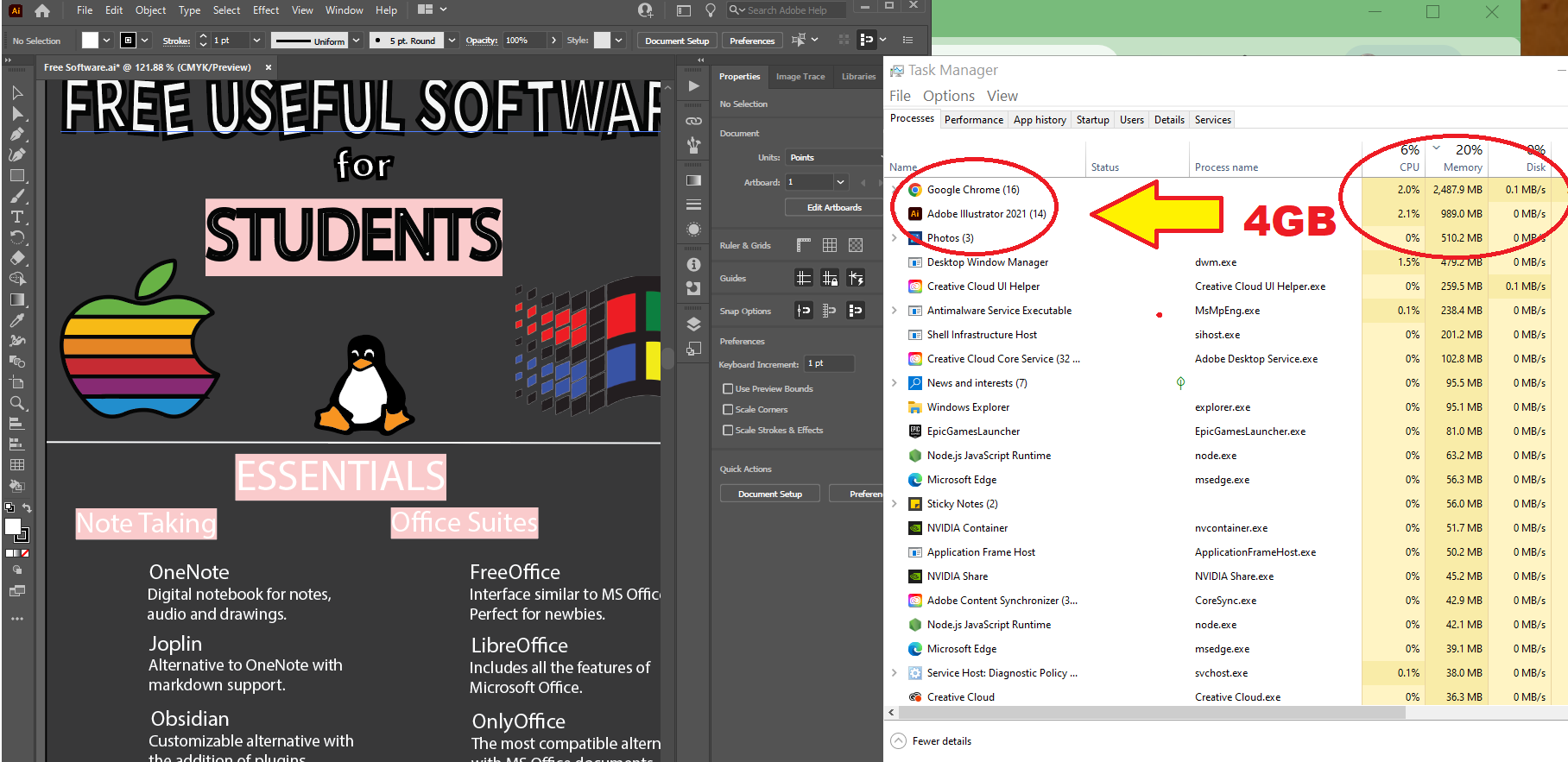
For Photo Editing I would STRONGLY advice for 16GB RAM. For those using ocassional, basic photo editing, you’ll just need 8GB RAM.
If you’re a professional photographer, you may NOT need 8GB RAM all the time but there will be instances where you have to work with very high resolution images and add lots of effects (or logos, labels, icons, drawings, etc). This can take a HUGE toll on RAM.
Note in the image above. Im running Illustrator , Google Chrome and “Photos” (windows default software for image previews). In the image, I’m working on a very LONG and detailed infographics, this takes 1GB and all the other software ~4GB.
Add Windows which takes 4GB and you’re already at 8GB RAM.
Other instances you’ll need 16GB RAM as the minimum are:
- High resolution photos (4k,8k) & Very Large Files (Gigabytes)
- Working on a project with lots of layers (Common for very large infographics)
- Working with several images at once (Ex: LightRoom).
- Working with multiple photo editing software (Photoshop + Lightroom)
- Adding extensions and plugins
Video Editing: 16GB RAM
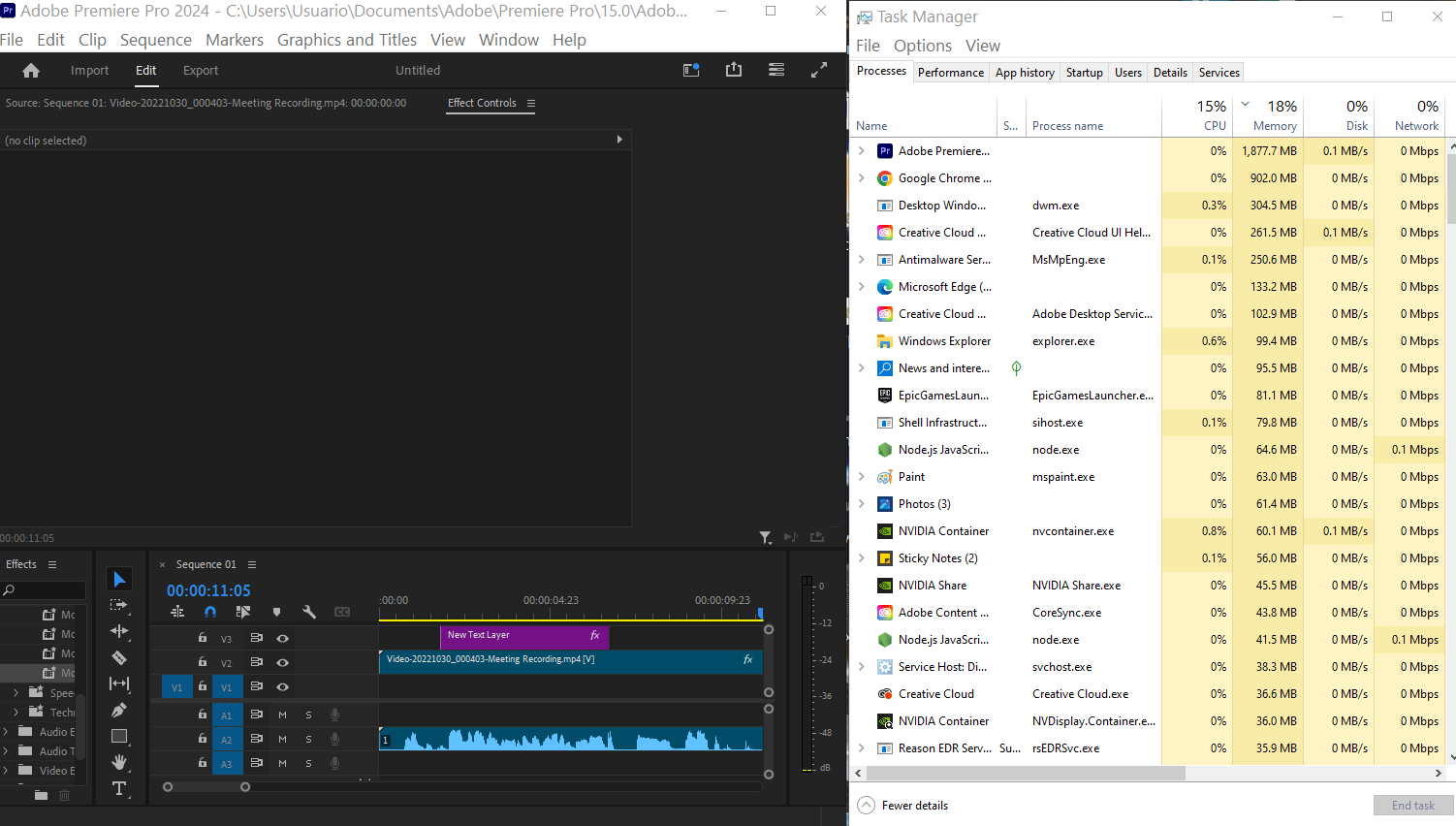
In the image above, Adobe Premiere is consuming around 2GB and that’s on a 1h 1080p video. If we add chrome and windows, the total RAM goes up to 7GB RAM. So 8GB RAM would be fine for the basic video editing here and there. There would be little need for any background software.
However, a professional video editor will use a combination of the following (some of these simultaneously) BESIDES Adobe Premiere:
- Adobe After Effects (animations and visual effects)
- Adobe Audition (for fine tuning audio)
- Photoshop (sometimes static images must be created)
- Media Encoder (to export in several formats)
If you have ANY of these OPEN simultaneously with Adobe Premiere and you’re editing a 1h 1080p video, you’ll need more than 8GB RAM.
16GB RAM will make sure you’ll be okay for 4k video editing or longer footage.
Programming: 8GB RAM
This is a very broad topic. You can be doing data science projects, running virtual machines, web designing, app development, etc.
However, for the average programmer and those getting started: 8GB should be plenty. Take a look at the example below:
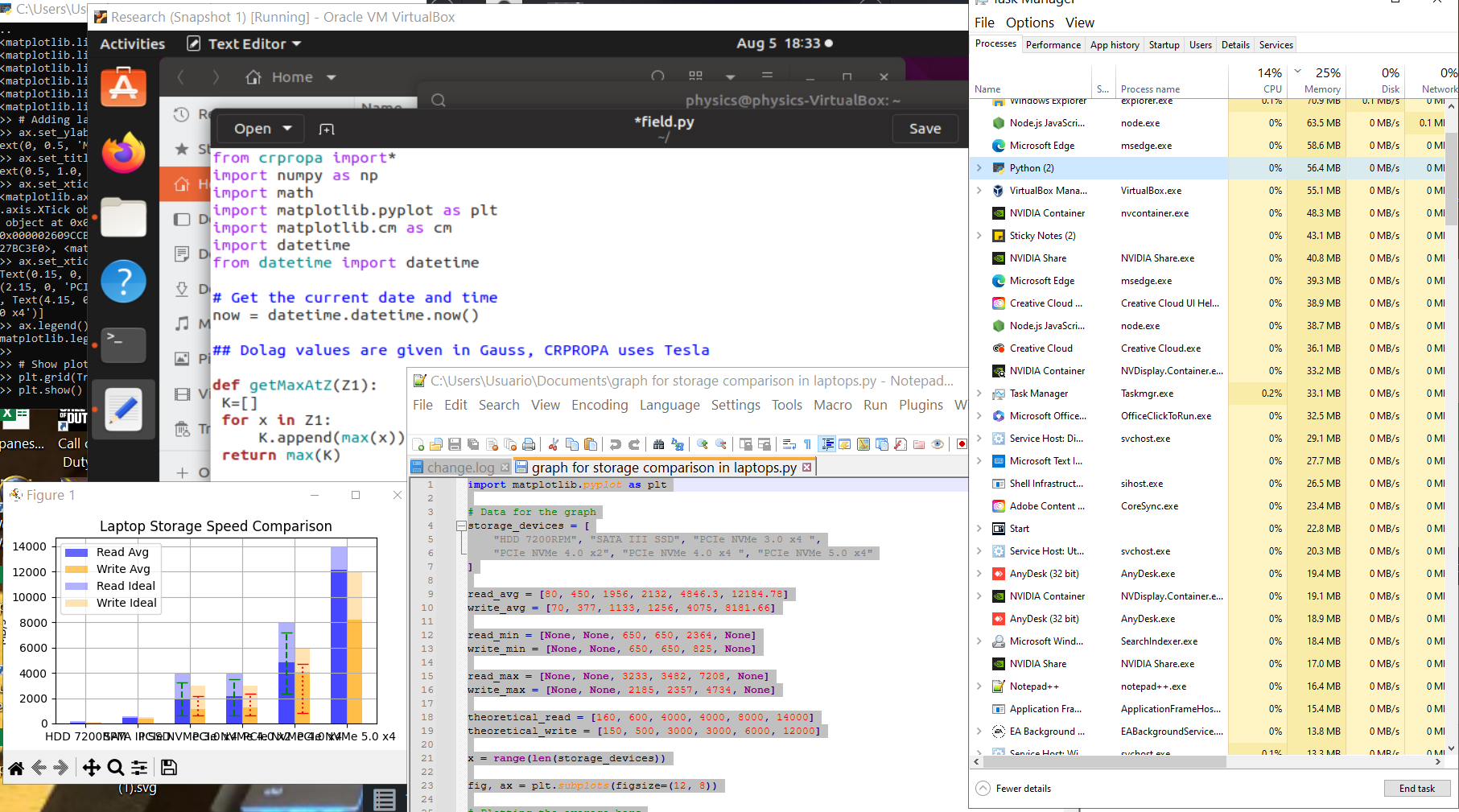
I’m not the average programmer. I run somewhat complex code but it does not require me to use a heavy IDE. The IDE I use is a simple code editor (NotePad++). I also run a VM (virtual machine) to program on Linux at the same time. I have assigned 2GB RAM to the VM so all I need is:
- Virtual machine and running code with it (simulation) – 2GB
- Code Editor (NotePad++) – 50MB
- Compiler (Python) – 50MB
- Chrome with lots of Tabs – 1GB
I’m only using about 4GB. Add windows (4GB) and 8GB is just plenty.
If you use a heavy IDE like VS Studio, Android Studio, XCode, Eclipse (with plugins) for a somewhat large project, you will need more RAM but no more than 16GB.
3D CAD Modeling: 8-16GB RAM
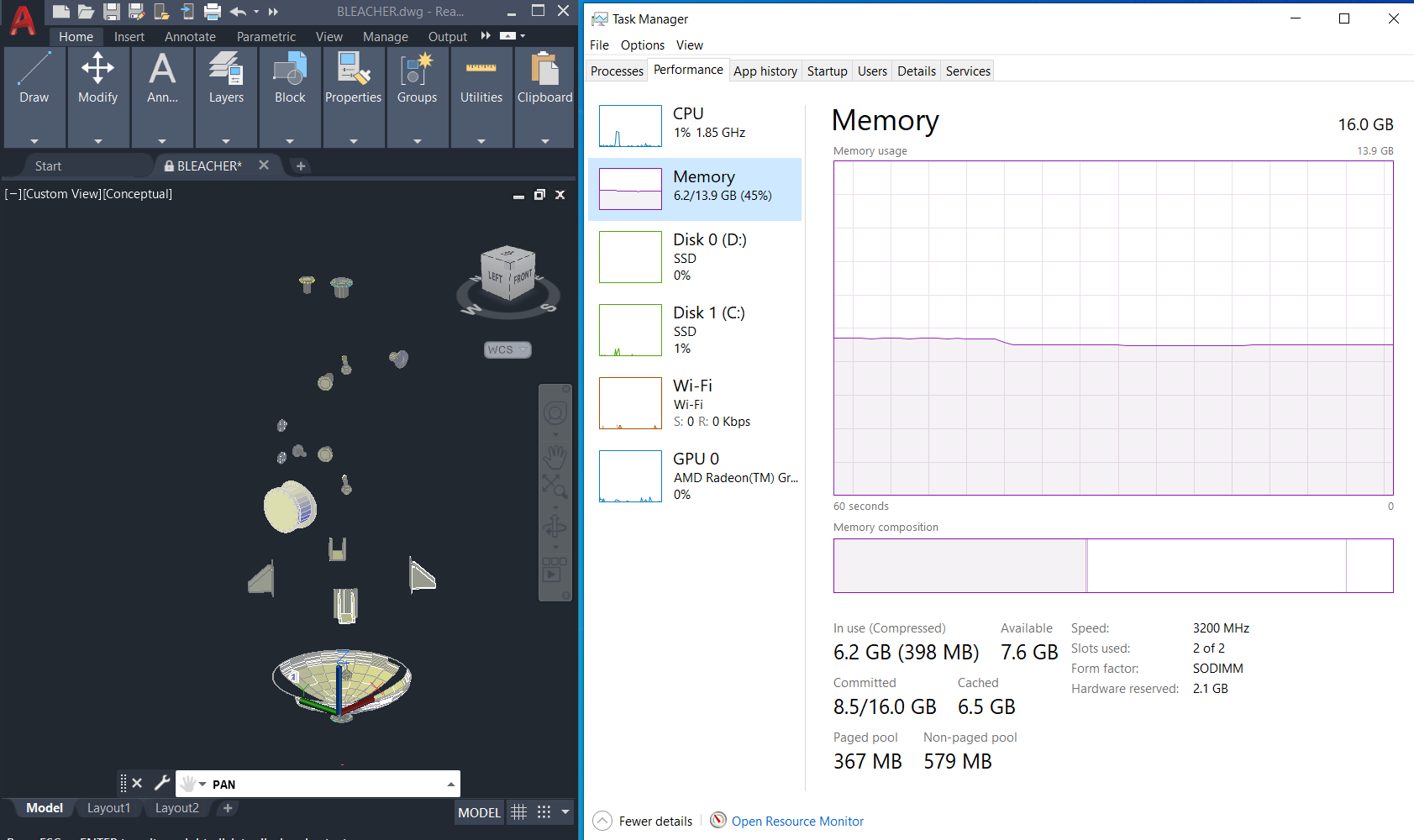
This is a very very broad topic. But to make it short and sweet:
- If you are a student, you only need 8GB RAM because models will stay small and you will be limited to low-parts or small models.
- If you’re running CAD modeling software on integrated graphics (as opposed to dedicated graphics). You want 16GB RAM for a performance boost.
- If you are a professional, you want 16GB RAM at the very minimum:
- Not only will models get larget but you are likely to be running other software in the background.
In the image above, i’m modeling a bleacher. In total, I’m only using 6.2GB RAM.
Conclusion
For everyday tasks and school purposes you only need 8GB RAM. Be it for Windows or Mac.
When you’re just getting started be it as a programmer, 3D CAD engineer, photo or video editor. It’s likely 8GB RAM will be more than enough but 16GB is more “bullet-proof” to maximize performance in all instances.
Author Profile
- I am physicist and electrical engineer. My knowledge in computer software and hardware stems for my years spent doing research in optics and photonics devices and running simulations through various programming languages. My goal was to work for the quantum computing research team at IBM but Im now working with Astrophysical Simulations through Python. Most of the science related posts are written by me, the rest have different authors but I edited the final versions to fit the site's format.
Latest entries
 LaptopsNovember 26, 2025Black Friday Week Deals 2025 (Updated Nov 28 1:37PM)!!!
LaptopsNovember 26, 2025Black Friday Week Deals 2025 (Updated Nov 28 1:37PM)!!! LaptopsJune 30, 2025Best Laptops for Computer Science (July 2025 )
LaptopsJune 30, 2025Best Laptops for Computer Science (July 2025 ) LaptopsJune 29, 20255 Best Laptops For Nursing Students (July 2025)
LaptopsJune 29, 20255 Best Laptops For Nursing Students (July 2025) LaptopsJune 19, 20255 Best Laptops For Teachers in 2025 (From $250)
LaptopsJune 19, 20255 Best Laptops For Teachers in 2025 (From $250)
